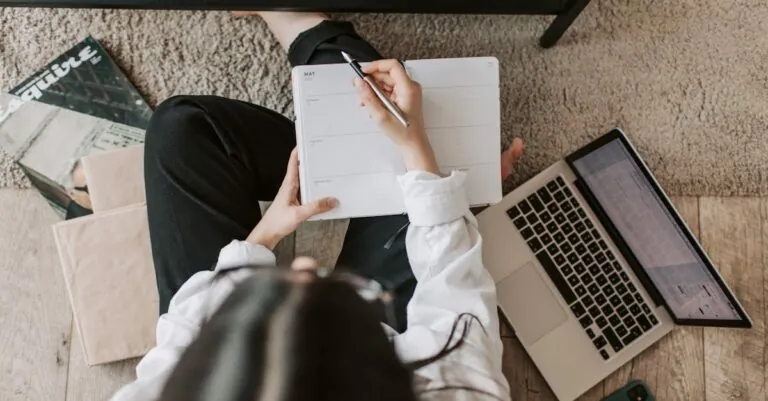Creating the perfect interior ambiance is like crafting a delightful cocktail—mixing the right ingredients can transform any space from drab to fab. Whether it’s a cozy nook for curling up with a book or a vibrant gathering spot for friends, the atmosphere sets the mood. Who knew that a few well-placed plants and the right lighting could make you feel like you’re living in a Pinterest board?
Table of Contents
ToggleUnderstanding Interior Ambiance
Interior ambiance sets the tone of a space, influencing emotions and behaviors. Creating a harmonious atmosphere enhances both comfort and aesthetics in various environments.
The Importance of Ambiance in Interior Design
Ambiance plays a crucial role in defining the overall feel and purpose of a room. It impacts relaxation, productivity, and social interaction. Thoughtfully designed spaces encourage different activities, such as unwinding in a cozy corner or hosting guests in an inviting living area. Well-crafted ambiance promotes a sense of belonging and enjoyment for residents and visitors alike. Additionally, elements like color schemes and furnishings contribute significantly to how a space is perceived and experienced.
Key Elements That Influence Ambiance
Lighting influences mood profoundly, transforming spaces from bright and energetic to soft and calming. Color schemes set the stage, with warm tones fostering intimacy and cooler tones promoting serenity. Textures enhance sensory experiences, as plush fabrics or sleek surfaces create tactile interest. Furniture arrangement makes a strong statement, guiding movement and conversation flow. Finally, personal touches, such as artwork or plants, add character, reflecting individual tastes and enhancing the overall ambiance.
Color Schemes for Ambiance
Color schemes significantly influence interior ambiance. Choices in colors can evoke emotions and create the desired atmosphere in any space.
Warm vs. Cool Colors
Warm colors like reds, oranges, and yellows create inviting environments. They often stimulate conversation and energy, making them ideal for living rooms and kitchens. On the other hand, cool colors such as blues, greens, and purples promote calm and relaxation. These shades work best in bedrooms and bathrooms. Selection of color ultimately determines the space’s emotional response. Color psychology plays a critical role in interior design.
Creating Contrasts for Visual Interest
Contrasts in color add depth and dimension. Combining light and dark hues enhances visual appeal in a room. Designers often use contrasting colors to highlight architectural features or create focal points. For example, pairing a dark navy with crisp white creates a striking effect. Using complementary colors also increases interest in art or decor pieces. Effective contrast makes the space feel dynamic and engaging. Choosing shades that complement each other fosters a harmonious atmosphere while maintaining visual intrigue.
Lighting Techniques to Enhance Ambiance
Lighting greatly influences interior ambiance, shaping how spaces feel and function. Employing a mix of natural and artificial light helps create a balanced atmosphere.
Natural Light vs. Artificial Lighting
Natural light enhances space by providing warmth and a sense of connection to the outdoors. Sunlight can make areas feel larger and more inviting. It’s essential to maximize daylight through large windows or skylights. Artificial lighting offers flexibility, allowing tailored brightness for any occasion. Opt for LED bulbs for energy efficiency and longevity. Consider dimmers to adjust brightness levels according to mood and time. Combining both types of light can transform a room, ensuring it remains energetic during the day and cozy at night.
Layering Light for Depth
Layering light adds dimension to a room, preventing flatness in design. Ambient lighting establishes the overall illumination, while task lighting focuses on specific activities like reading or cooking. Accent lighting can highlight artwork or architectural features. Employ floor lamps, table lamps, and wall sconces to create varied light levels. Different light sources contribute to a richer environment. By mixing these lighting types, it becomes possible to set distinct moods for different areas, enhancing both functionality and aesthetics.
Textures and Materials for a Cozy Atmosphere
Textures and materials play a crucial role in creating a cozy atmosphere. Thoughtful selection brings warmth and inviting vibes to any space.
Soft Fabrics for Comfort
Soft fabrics, such as plush throw blankets and velvety cushions, enhance comfort immensely. These materials invite relaxation, making spaces feel welcoming. Natural fibers like cotton and linen offer breathability, contributing to an overall cozy feel. Layering soft textiles adds depth, inviting guests to sink into comfort. Incorporating area rugs not only defines spaces but also creates a soft underfoot experience. Establishing a balance with various fabric textures results in a pleasing aesthetic that encourages warmth and ease.
Incorporating Natural Materials
Natural materials, including wood and stone, enrich the ambiance significantly. Wood accents, like furniture and beams, evoke a sense of tranquility and timelessness. Stones bring a rustic charm that grounds a space, creating a connection to nature. Incorporating elements like jute or seagrass in decor enhances tactile experiences while maintaining an organic feel. Using earth tones alongside these materials accentuates warmth, fostering an inviting atmosphere. Emphasizing sustainability through the selection of natural materials promotes not just comfort but also a responsible approach to interior design.
Personalizing Your Interior Ambiance
Creating a personalized interior ambiance reflects individual tastes and preferences. People can easily infuse their unique style into their spaces by incorporating specific elements.
Reflecting Your Personality
Emphasizing personal touches transforms a house into a home. Artwork, photographs, and handmade items showcase unique stories and experiences. Choosing colors that resonate with one’s identity can significantly impact the space’s overall vibe. Some people prefer bold hues to ignite energy, while others opt for soft tones for tranquility. Selecting furniture with character can enhance the ambiance, creating an inviting atmosphere that feels distinctly personal.
Cultural Influences in Design
Drawing inspiration from diverse cultures often enriches interior design. Incorporating artifacts, textiles, and colors from different backgrounds adds depth and meaningful context. Cultural motifs and patterns can create visual interest that tells a story. Many design enthusiasts appreciate incorporating traditional elements to evoke nostalgia and connection to heritage. Using materials native to specific cultures, such as bamboo or terracotta, fosters an authentic ambiance that resonates with history and tradition.
Creating the perfect interior ambiance is a blend of thoughtful choices and personal expression. By carefully considering elements like lighting colors textures and personal touches it’s possible to craft spaces that resonate with warmth and style. Each decision contributes to an atmosphere that not only enhances aesthetics but also nurtures comfort and connection.
Whether it’s through the calming hues of a bedroom or the vibrant tones of a social area every detail plays a role in shaping experiences. Embracing these ideas allows for the transformation of any room into a haven of tranquility or a lively gathering spot. Ultimately the right ambiance can elevate everyday living making homes feel truly inviting and uniquely personal.









